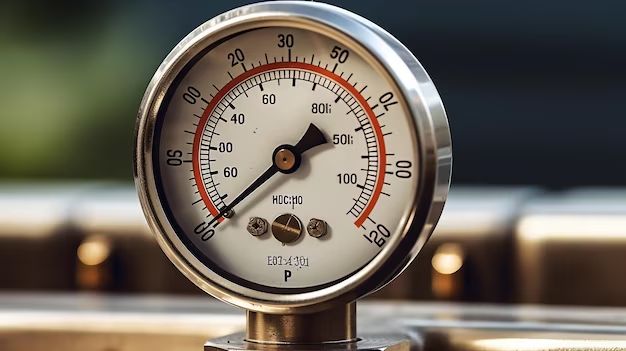Both 30/50 and 40/60 pressure switches are commonly used in HVAC systems and hydronic heating applications. The main difference between them is the pressure settings that will cause the switch to activate. Choosing the right pressure switch depends on the specifics of your system and what you need the switch to do.
Page Contents
What is a pressure switch?
A pressure switch is a safety device that is used to monitor the pressure in a system. It has an electric contact that is activated when the pressure rises above or drops below a set threshold. In HVAC and hydronics applications, pressure switches are used to monitor the pressure of refrigerants, air, water or steam flowing through the system.
The switch serves as a safety cutoff in case the pressure gets too high or too low. For example, if a filter gets clogged or a pump fails, pressure will build up. The pressure switch will trip at its high threshold and shut the system down to prevent damage. Conversely, if a leak occurs, the pressure will drop. The switch will trip at its low threshold and shut down the system before operation becomes unsafe.
How do pressure switches work?
A pressure switch contains a flexible diaphragm or bellows that expands and contracts based on the pressure. The diaphragm is mechanically connected to an electric switch contact. When the pressure reaches the high threshold, the contact closes, completing the control circuit. When the pressure drops below the low threshold, the contact opens again.
The specific pressure thresholds where the switch changes state are adjustable, usually via a screw or bolts. The range between the high and low thresholds is called the differential. A common differential is 20 psi.
What do the numbers mean?
The numbers on a pressure switch refer to the high and low pressure thresholds where the switch changes state. For example:
- A 30/50 switch turns on at 50 psi and off at 30 psi
- A 40/60 switch turns on at 60 psi and off at 40 psi
So in a 30/50 switch:
- 30 psi = low threshold where switch opens
- 50 psi = high threshold where switch closes
And in a 40/60 switch:
- 40 psi = low threshold where switch opens
- 60 psi = high threshold where switch closes
The differential is 50 – 30 = 20 psi and 60 – 40 = 20 psi for these examples.
30/50 vs 40/60 Pressure Switches
Now that we understand what the numbers mean, let’s compare 30/50 and 40/60 pressure switches and when you would choose one or the other:
Operating Pressure Range
The main difference between these switches is the operating pressure range. Use a 30/50 switch for lower pressure systems up to 50 psi. Use a 40/60 switch for higher pressure systems from 40 to 60 psi.
Single vs Dual Pressure Settings
Some pressure switches allow you to adjust both the high and low settings independently. Others have a fixed differential. 30/50 and 40/60 switches often have a fixed 20 psi differential.
If you need to customize the activation points, look for a dual pressure adjustment switch. If a 20 psi differential works for your application, a 30/50 or 40/60 will suffice.
Voltage
Ensure the pressure switch voltage matches your system’s control voltage. 24VAC and 120VAC are common. There are 30/50 and 40/60 switches available in various voltage configurations.
Switch Type
The most common types are:
- Manual reset – Must be reset manually after tripping
- Auto reset – Resets automatically when pressure returns to normal range
Auto reset types are commonly used for HVAC systems. Go with manual reset for critical equipment that requires checking by a technician after a fault trip.
Switch Features
Other features to consider:
- Adjustable vs fixed thresholds – Adjustable allows customizing trip points
- Deadband – Range where the switch will not change state to prevent chattering
- Snap acting vs proportional – Snap acting switches change state abruptly when a threshold is crossed. Proportional types transition gradually.
Choose features appropriate to your application.
Example Applications
HVAC
In an HVAC system, the pressure switch monitors the refrigerant pressure. A 30/50 switch is commonly used for R-22 refrigerant. For newer, eco-friendly refrigerants like R-410A, a 40/60 switch is better suited to the higher pressures.
Chilled Water
Pressure switches protect chilled water loops used for cooling. Typical settings are in the 30-50 psi range. A 30/50 switch with an auto reset is a good fit.
Condensate Pumps
For condensate pumps, the switch monitors whether liquid is present. Low pressure indicates a problem. A pump-down cycle is initiated if pressure drops below the low threshold. A 20 psi switch may be used for this application.
Recommendations
Here are some general recommendations on when to use a 30/50 vs a 40/60 pressure switch:
| 30/50 Switch | 40/60 Switch |
|---|---|
| – Low pressure HVAC systems (R-22) | – Higher pressure HVAC systems (R-410A) |
| – Chilled/hot water loops | – High temperature hot water boilers |
| – Condensate pumps | – Steam systems above 15 psi |
| – Hydronic heating systems | – Compressed air systems |
Conclusion
In summary, consider the following when choosing a 30/50 vs 40/60 pressure switch:
- Operating pressure range of your system
- Customization needed for pressure thresholds
- Control voltage
- Reset type – auto or manual
- Special features like deadband and proportional switching
Both 30/50 and 40/60 switches are reliable options – just match the range to your application pressures. Consider a 30/50 switch for lower pressure HVAC and hydronic systems. Use a 40/60 switch for higher pressure steam, compressed air, and high-temperature hot water applications.
